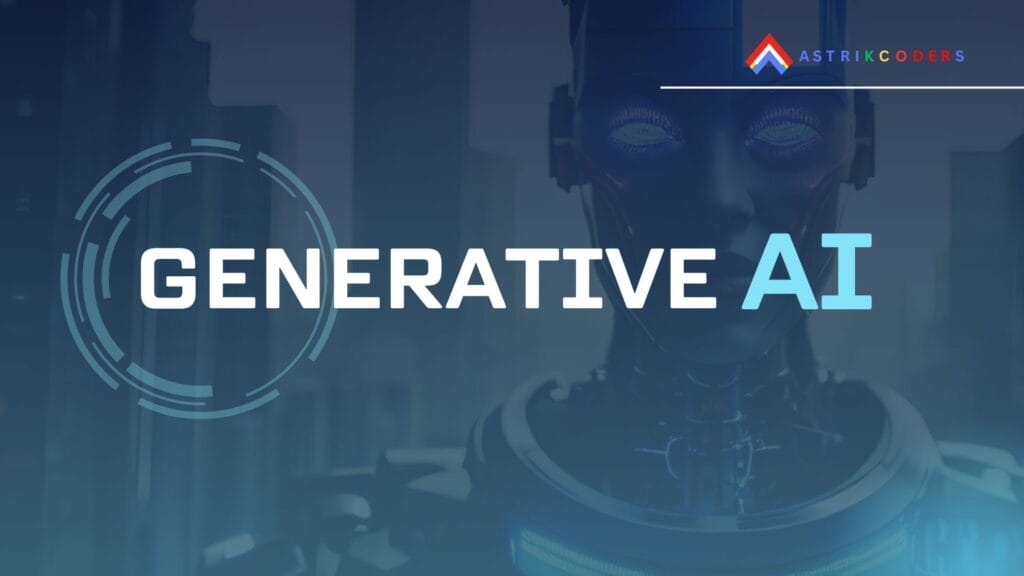1. What is Generative AI?
Generative AI software is what artificial intelligence utilizes to accomplish original content. Unlike the traditional state of AI in the form of rules or prethought analysis, it employs deep learning methods such as neural networks to accomplish original output. This comes in the forms of images, music, or writings, and even complete novel data structures.
The most significant difference between classical AI and generative AI is that it can generate something new and not just predict or classify. Classical AI learns patterns whereas generative AI generates something new from patterns.
1.2 Importance of the Current Technological Era
Generative AI is becoming ever more the foundation of innovation, industry by industry. With power to create, adapt, and refine content, new doors now lie ajar. It’s used in commerce for marketing, artists for creating stories, and scientists for inventing medicines.
Its influence penetrates, becoming effective, speed-up imagination, and expanding beyond what can be done with AI.
2. Creative Arts and Content Creation
2.1 Visual Art Design
Generative AI is revolutionizing computer-generated art because of the capability of designers and artists to create original works of art. Real-time prototyping and complex designs with the help of AI tools, thus, make it a requirement for the film and video game industries where top-notch assets are required.
2.2 Music and Sound Design
Music has opened doors for AI to compose and discover. Generative AI can produce complete songs, design adaptive soundscapes, and provide new audio effects, producing new styles and genres.
2.3 Content Creation and Storytelling
Screenwriting to blogging, generative AI boosts content generation by producing coherent, diverse, and interesting content. Authors employ AI for inspiration, speeding up drafts, or even composing stories in literature or film.
3.Business and Marketing Optimization
3.1 Targeted Advertising Campaigns
With generative AI, companies can create extremely targeted marketing messages in line with customer demand. The approach improves engagement and improves return on investment in ad campaigns.
3.2 Product Design and Development
AI-based design tools allow teams to quickly iterate over concepts, creating 3D models or mockups at minimal cost. Customer feedback can be directly integrated, accelerating product iteration cycles.
3.3 Data Analysis and Reporting
Transcription of raw data to readable reports streamlines business decision-making with generative AI. Long-term planning is informed by the trends and patterns that are identified.
4. Education and E-Learning Innovations
4.1 Personalized Learning Experience
The learning experience is adapted to individual learners through generative AI. Feedback and quizzes created by AI allow students to study topics with individually optimized efficiency.
4.2 Generating Learning Content for Educational Material
Generative AI enables interactive lessons, virtual web lessons, and multimedia learning materials. Generative technology reveals more enjoyable and superior resources to learn from.
4.3 Virtual Educator Assistants
Virtual AI teacher aids guide learners while learning, respond to their queries, and assist them. Software automation facilitates teachers in class activity and assignment management easily.
5. Healthcare Innovation
5.1 Drug Development and Discovery
Generative AI accelerates drug discovery by designing new molecular structures and predicting their interactions. It accelerates research stages and reduces the expense in clinical trials.
5.2 Medical Imaging and Diagnostics
AI enhances imaging diagnosis precision by identifying abnormality at an early stage. Artificial medical data generated by AI help train accurate diagnostic models.
5.3 Patient-Centric Tools
Generative AI facilitates the creation of customized health habits and learning content and enables individuals to become the masters of their own lives.
Generative AI is the fulfillment of the revolutionary potential of technology. From its application in creative work, business, education, and medicine, it continues to find new paths and transform industries. Its creation also poses ethical questions of how to manage possible biases and safeguard jobs and creativity.
As the technology advances, society must responsibly direct its development into a form where generative AI is in everyone’s best interest.
Frequently Asked Questions (FAQs)
What are a few examples of current generative AI tools?
What are some recent examples of generative AI technologies?
Some of the most famous ones are applications such as DALL-E, ChatGPT, and DeepMind’s AlphaFold.
How do generative AI form work and labor markets?
Although it can be applied to automate certain labor, generative AI also brings new possibilities, and the workforce will have to change and develop new skills.
Are there ethical challenges to generative AI?
Yes, i.e., data privacy, AI model bias, and abuse of technology.
Can generative AI supplant human creativity for art?
Generative AI enables more creativity as it is a tool but not copies human emotion or sense of purpose behind creative work.
What are the limitations of generative AI technologies?
The challenges are keeping it accurate, knowing the context, avoiding prejudice, and being able to do complex tasks beyond its training. Hope you like this content and find it useful! Feel free to comment or delve into any specific section further.
